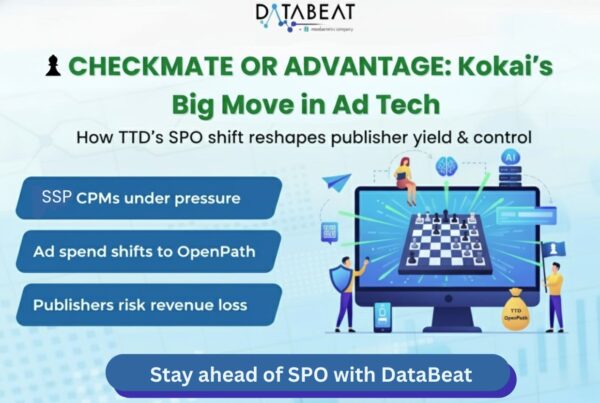
Would you ever spend money to show your ads on low-quality websites, even if the cost per thousand impressions (CPM) is lower? It might seem enticing at first glance due to the reduced expense, but bear in mind that paying for ad placements in environments cluttered with spam can result in your advertisements simply getting lost in the digital noise.
In the ever-evolving world of digital marketing, there’s a new buzzword making its way into the lexicon: Made For Advertising sites, or MFAs. These platforms have disrupted the digital advertising landscape in ways that marketers and advertisers are only just beginning to grasp.

Understanding MFAs: A Closer Look
A quick dive into the world of MFAs reveals a strategy that’s designed to maximize ad exposure at all costs. These websites are explicitly created to flood each page with a barrage of advertisements, often making it difficult for users to find the content they actually seek. It’s a volume game; more ads equal more revenue, but at what expense?
MFA websites are platforms meticulously crafted with a single objective – to maximize profits from advertising. These platforms achieve this goal by relentlessly driving traffic to their websites, often through search engines and social media channels like Facebook, TikTok, or Instagram. However, the pursuit of profit on MFA sites often comes at the expense of quality content and user experience.
To accomplish their mission, MFA websites employ a range of tactics, including:
- Filler Content: Generating content of questionable value, often sensational or clickbait in nature.
- Clickbait Headlines: Crafting headlines designed solely to lure users.
- Networks of Interlinked Websites: Creating webs of interconnected sites to increase traffic.
- Multi-Page Articles: Crafting lengthy articles to maximize the number of display and video ads shown to users.
This unrelenting focus on ad impressions frequently results in a subpar user experience, with users inundated by ads, encountering confusing user interfaces, and encountering deceptive navigation elements. Some MFA sites may even employ tactics like pixel stuffing or ad stacking, aiming to load as many ads onto a page as possible, often beyond what is visible to users.
For advertisers, MFA websites present a significant challenge. Advertisers strive to ensure that their ads appear alongside quality content that aligns with their brand. However, MFA sites can undermine these efforts, potentially damaging a brand’s reputation even if ad placement on such sites is unintentional.
Jounce Media, a prominent player in the digital advertising landscape, estimates that around 12% of programmatic display ad budgets find their way to MFA websites. This statistic underscores the significance of the issue and its potential financial impact on advertisers.
Sadly, while some publishers profit from MFAs, legitimate news sites and quality publishers may lose out on much-needed ad revenue.
Additionally, according to a Digiday article on MFA, there is ongoing discussion in the industry about MFA, with insights into different strategies adopted by companies. This adds another layer of complexity to the challenges advertisers face, emphasizing the importance of carefully navigating the digital advertising landscape to safeguard brand reputation.


The MFA Strategy Unveiled
Picture a scenario where you click on a link, hoping to access some valuable content, only to be bombarded with pop-ups, banners, and interstitial ads. Navigating through multiple pages becomes a frustrating necessity just to get to your desired destination. This strategy is at the core of MFAs: revenue through relentless ad bombardment.
The Impact on the Industry
Addressing MFA websites is essential for advertisers for two primary reasons:
- Ineffectual Advertising Spending: MFA websites can compromise the effectiveness of advertising campaigns by directing ad spending to platforms that yield minimal or no business results.
- Brand Image Erosion: Associating your brand with the content and user experiences of MFA websites can gradually erode your company’s reputation in the market. This erosion poses a significant risk to your brand reputation, as consumers may start associating your business with less reputable or questionable practices.

The impacts of placing ads on MFA websites can be profound:
- Paying for Ineffectual Placements: MFA websites often feature more ads than genuine content, diluting the value of individual ad placements. Advertisers may pay for placements with little hope of meaningful engagement.
- Artificial Traffic: MFA sites may generate accidental ad clicks, leading to higher bounce rates and reduced time spent on pages without meaningful interactions. Advertisers essentially pay for accidental clicks.
- Brand Reputation Damage: MFA sites often rely on sensationalism, divisive content, fake news, explicit material, and other undesirable formats. Aligning your brand with such content can severely harm your brand image.
- Low Conversion Rates and Inefficient Spending: Advertising on MFA sites often results in paying for ad impressions that do not positively impact business. Tactics like ad stacking and pixel stuffing can further compound inefficiencies.
The scale of MFA is staggering, growing consistently year by year, emphasizing the urgency of addressing the issue.
Is “Made for Advertising” Ad Fraud?
MFA shares some tactics with ad fraud but typically does not reach the same level of illegality. While ad fraud intentionally inflates advertiser metrics through illicit means, MFA focuses on maximizing ad profits without outright defrauding advertisers.
Ad fraud employs unlawful methods to deceive advertisers into purchasing from an ad ecosystem that fails to reach the intended audience. In contrast, MFA often adheres to minimal standards while pursuing maximum ad profits.
Recognizing MFA Websites
Identifying MFA websites is paramount for advertisers. A telltale sign is the excessive number of overlapping or redundant ad placements crowding the content. Browser plugins like AdBlock and tools like Fou Analytics can detect these sites by analyzing ad traffic, requests, and links for ad stacking or pixel-stuffing techniques.
Avoiding MFA Sites
Advertisers have several strategies to avoid funding MFA placements:
- Choose Reputable SSPs: Partner with supply-side platforms (SSPs) known for strict anti-MFA policies.
- Manual Exclusion: Take control by manually excluding specific websites from your ad campaigns.
- Data-Driven Decisions: Analyze data to identify partners or publishers engaged in MFA practices and take prompt action.
- Collaborate with Ad Tech Innovators: Form alliances with ad tech companies that prioritize brand safety and contextual relevance.
- Custom Categories: Leverage custom categories provided by ad tech firms to block ads from appearing on identified MFA sites.
- Contextual Targeting: Implement contextual targeting strategies to ensure ads align with brand values and objectives.
By following these steps, advertisers can steer clear of MFA sites and protect their brand image and ad investments.
Key Strategies for Publishers to Prevent MFA and Promote Equity in Advertising:
- Prioritize High-Quality Content:
- Focus on creating meaningful, original, and engaging content to provide value to your audience.
- Quality content attracts legitimate advertisers and ensures a positive user experience.
- Maintain Transparency:
- Clearly disclose your advertising practices to your audience.
- Ensure a clear separation between editorial content and advertising, labeling sponsored content and native advertising.
- Monitor Ad Inventory:
- Regularly review the ads displayed on your website and their sources.
- Implement ad quality controls to prevent low-quality ads and clickbait content.
- Collaborate with Reputable Partners:
- Work with reputable ad networks and partners who adhere to industry standards.
- Collaborative efforts help maintain the integrity of your website’s advertising.
- Combat Ad Fraud:
- Implement robust security measures to protect your app/website from ad fraud.
- Utilize anti-bot and anti-fraud solutions to ensure the authenticity of user interactions.
- Advocate for Industry Reforms:
- Actively participate in industry discussions and organizations that aim to create a fair and equitable advertising environment.
- Advocate for industry standards that address concerns related to MFA and promote inclusivity.
- Consider Unique Challenges:
- Acknowledge and address the specific challenges faced by underrepresented media outlets, such as Black-owned publishers.
- Strive for a more inclusive and equitable advertising ecosystem that supports the growth and success of all publishers.
By following these points, publishers can maintain the integrity of their websites, prevent MFA practices, and contribute to a more fair and inclusive advertising landscape.
Leverage Databeat’s Expertise to Navigate the Digital Advertising Landscape
Databeat stands ready to assist advertisers in their quest for brand safety and effective ad placements. With a wealth of experience and cutting-edge solutions, we can help you avoid the pitfalls of MFA and maximize the impact of your digital advertising campaigns.
Our team at Databeat is dedicated to ensuring that your ads reach the right audiences in the right context while safeguarding your brand reputation. We offer comprehensive tools and strategies that empower advertisers and publishers to make informed decisions, form strategic partnerships, and maintain control over their ad placements.
In conclusion, understanding and avoiding Made for Advertising websites are vital for advertisers aiming to safeguard their brand image and maximize their ROI in the digital advertising realm. In a landscape where MFA sites continue to pose challenges, Databeat’s commitment to data-driven decision-making, brand suitability, and contextual relevance provides you with the resources you need to navigate the digital advertising landscape confidently. We’re here to help you protect your brand image and optimize your ad spend, ensuring a successful and impactful advertising journey.










